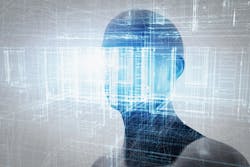Is artificial intelligence the next frontier in security technology?
It sounds like the stuff of science-fiction; computer-based systems that can learn behavior pattern and make predictions about future incidents in both the physical and virtual world. After all, just mentioning the term “artificial intelligence” typically conjures up thoughts of machines becoming self-aware and annihilating humankind vis-a-vis “The Terminator.” But while some may brush off the idea that security systems leveraging artificial intelligence or AI, for short, will ever come to fruition, the reality is they are already being implemented in a variety of applications.
Just last month, Armorway, which has patented an artificial intelligence platform that combines a variety of analytics with cognitive intelligence and deep machine learning, announced that it has received $2.5 million in funding from a variety of investors. The company, which has received support in the past from the University of Southern California, the Department of Homeland Security, Department of Defense and U.S. Army Research Office, said the money will help further develop its AI and prescriptive analytics solutions.
According to Armorway CEO and co-founder Zareh Baghdasarian, the company’s technology was created as a result of many of years research related to helping these aforementioned government entities better leverage data they had with more limited decision-making resources. Specifically, Baghdasarian says their goal was to develop a solution that would help these organizations be more proactive in their decision making towards security, planning, and other areas.
One thing that really differentiates the Armorway AI platform from anything else currently available in the marketplace is that it incorporates not just one or two different kinds of analytics, but a combination of four different types of analytics to provide users with a comprehensive risk picture including:
- Descriptive analytics that shows the user what has happened and provides them with tools, such as tables and charts, to help them actually visualize an incident.
- Diagnostic analytics that tells users why an incident happened and the Armorway platform that uses approaches like deep machine learning, regression analysis and other statistical tools to help them understand exactly what happened in their environment.
- Predictive analytics that uses the information provided by descriptive and diagnostic analytics to explain what happened and why, and to predict what’s going to happen in the future.
- Prescriptive analytics leverages tools, such as “Game Theory,” that can optimization, simulation and graph analysis to determine what an end user's best course of action is given that an adversary is trying to do similar things on the opposite site of the equation.
Armorway’s AI platform is also unique in that it can alert users to both physical and cyber threats. Because their solution actively integrates all of the data being generated within an organization, Baghdasarian says they can help end-users plan and prepare all types of risks – whether they be physical crimes committed on premises or a malicious insider looking to exfiltrate sensitive data.
“For example, if you see an event happening and there is an alarm that comes up that there is a possibility that something could happen, you’ve got to assign your resources for your countermeasures to combat that,” Baghdasarian says. “We would alert your countermeasure deployments according to the event on the alerts.”
In addition, because they’ve discovered that end-users receive too many alerts as it is, Armorway’s software actually prioritizes them so that in the event of an investigation, they can look back to determine what alerts might have been the most relevant. Alternatively, in a real-time situation, end-users can observe these alerts as the system is making recommendations to see why it is suggesting they take a specific action.
When it comes to what the system is looking for in terms of nefarious behaviors, it really depends on the type of environment in which it is being asked to operate. For example, with regard to crimes committed on an educational campus, the software will look at all of the incidents that have been reported on the campus historically, where they have happened and what times they’ve happened combined with things such as class schedules and social media postings to see what factors can actually predict future crimes.
The system can also integrate with security sensors – surveillance cameras, access card readers, etc. – an end-user may have along with any types of analytics they provide.
“If there is an environment where they have cameras and video analytics installed we will integrate with that and then we will basically, according to their resource deployment, coordinate what needs to be monitored,” Baghdasarian adds. “Another area we integrate with currently is physical access door locks for employee screening, which is very critical in some environments where you only want certain employees to be at certain places at certain hours and you want to monitor their behavior. For example, if you have someone who comes to the office every day from 8 a.m. to 5 p.m. and then all of sudden they start coming in from 5 p.m. to 9 p.m., they probably don’t need to be there during that time. We integrate with the access logs and we consider that in our recommendations.”
The company already counts the U.S. Coast Guard, Federal Air Marshall Service, Los Angeles County Metropolitan Transportation Authority, as well as a variety of municipal and university police departments among its customers. Baghdasarian says they believe the software is not only applicable to law enforcement and government agencies but enterprises and critical manufacturing facilities as well.
About the Author
Joel Griffin
Editor-in-Chief, SecurityInfoWatch.com
Joel Griffin is the Editor-in-Chief of SecurityInfoWatch.com, a business-to-business news website published by Endeavor Business Media that covers all aspects of the physical security industry. Joel has covered the security industry since May 2008 when he first joined the site as assistant editor. Prior to SecurityInfoWatch, Joel worked as a staff reporter for two years at the Newton Citizen, a daily newspaper located in the suburban Atlanta city of Covington, Ga.

